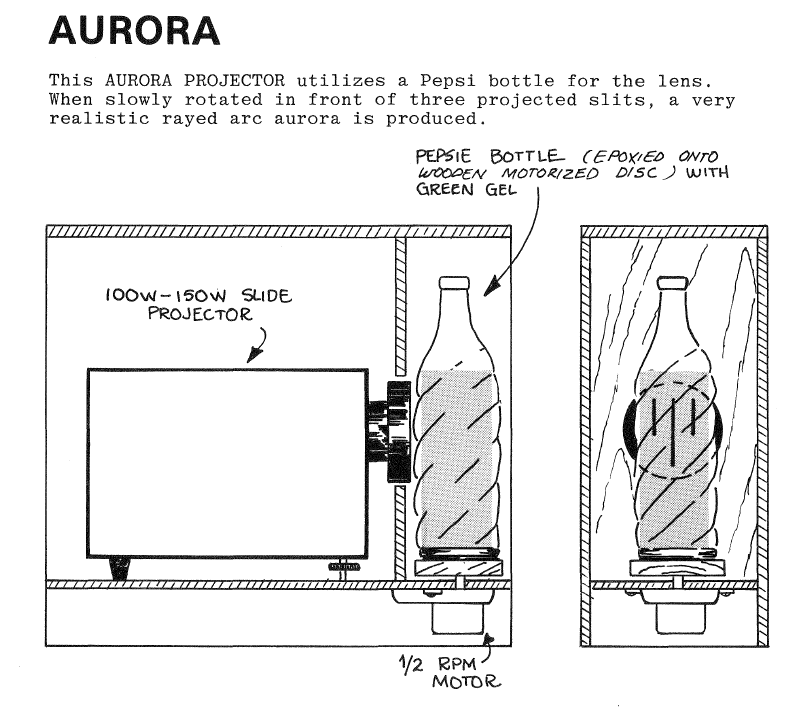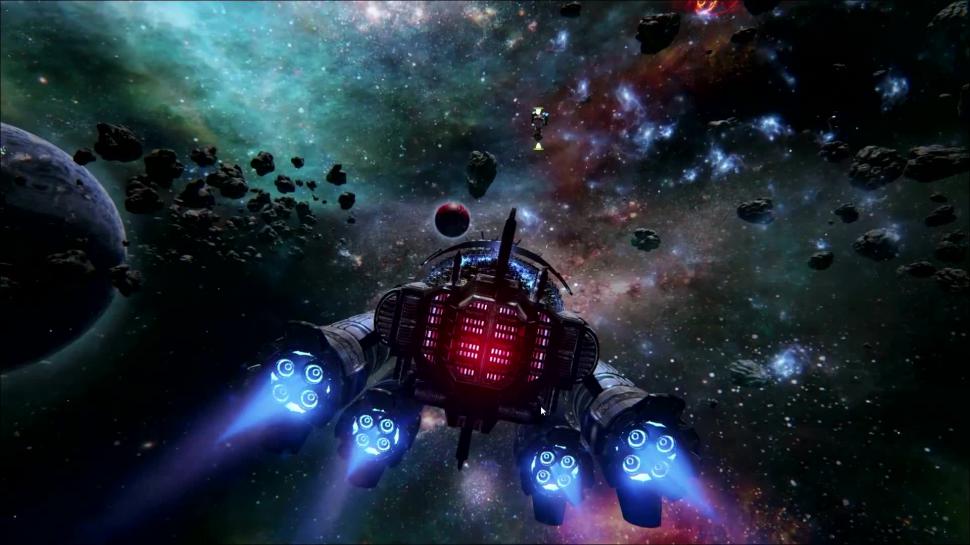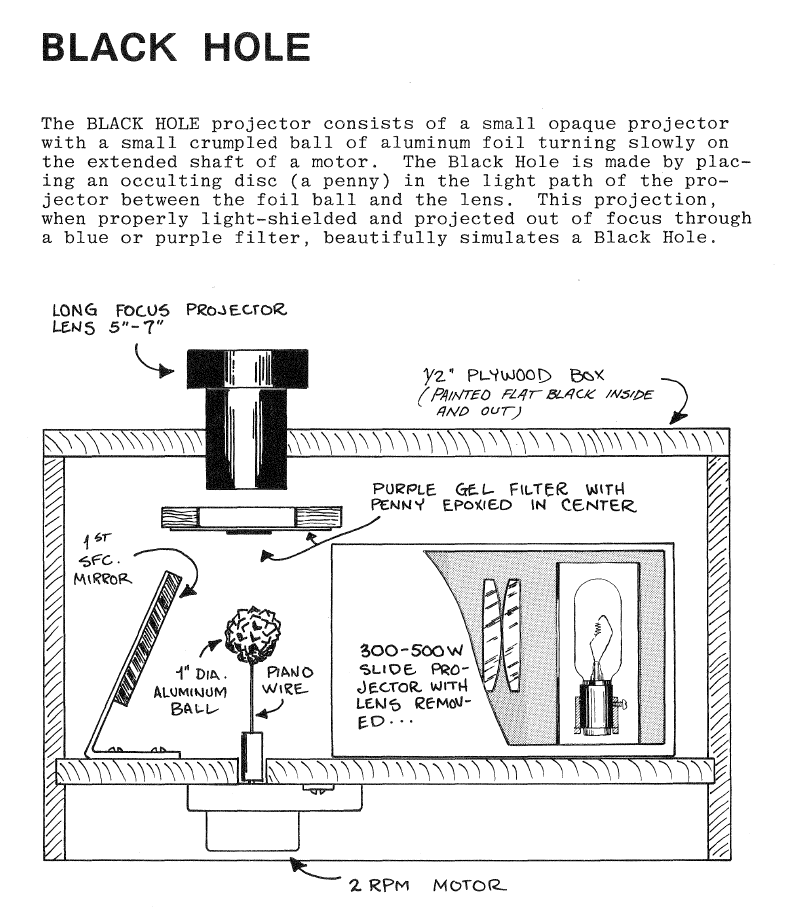In researching planetarium projectors for this recent piece on Inpixelated I stumbled across a gorgeous hand-assembled manual for sharing ideas for visual effects between planetarium operators in the early 1980’s.
There’s something very endearing about the cobbled-together-with-bits-of-tape, can-do enthusiasm of it all.

Pieces of crumpled up aluminium foil become a black hole; the reflection of a Pepsi bottle becomes an aurora.
The Special Effects Projector Sourcebook was put together by David A. Aguilar for the International Planetarium Society in 1982.
The diagrams and accompanying text are tribute to a community that found increasingly inventive ways to bring the wonders of the universe to their audiences using only the most basic of resources. In a pre-internet age, they also found ways to share and expand on that knowledge.

We’ve come a long way since. The newly announced Unreal Engine 5 can resolve billions of polygons in real time to create stunningly realistic space simulations. Digital projection systems have long since rendered these kinds of home-brew effects redundant.
But it’s pleasant to think of enterprising souls cobbling together coloured gels, sweet wrappers, and bits of Blu Tack, and conjuring up whole galaxies and cosmic realms!

There are many more gems to be viewed using the download link below…
Check out the Special Effects Projector Sourcebook 1982 (PDF file download) here